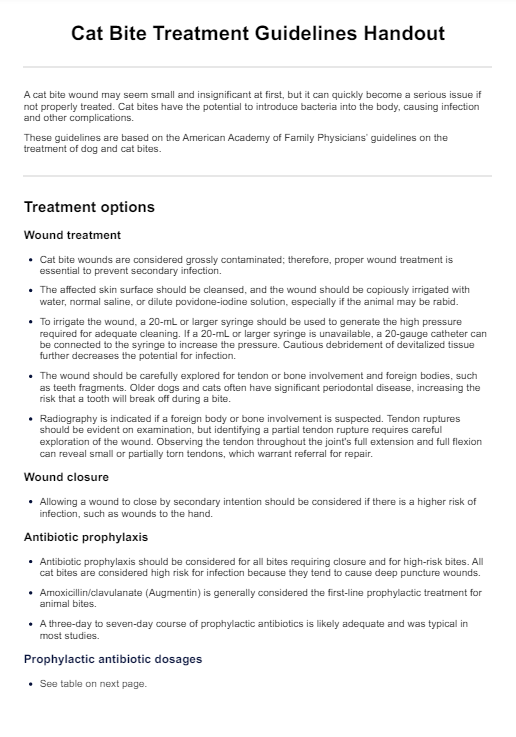As a healthcare professional, you should advise patients to clean the wound thoroughly with soap and water, apply an antibiotic ointment, and cover it with a clean bandage. Emphasize the importance of seeking medical attention as soon as possible to reduce the risk of infection.

Cat Bite Treatment Guidelines Handout
Use our comprehensive guidelines to treat cat bites effectively. Download our free Cat Bite Treatment Guidelines Handout and ensure optimal patient care.
Use Template
Cat Bite Treatment Guidelines Handout Template
Commonly asked questions
Instruct patients to watch for signs of infection, such as redness, swelling, warmth, pus, or fever. If these symptoms occur, they should contact their healthcare provider immediately.
Explain to patients that while both types of bites can be serious, cat bites are more likely to cause infections due to the deep puncture wounds they create, which can trap bacteria.
EHR and practice management software
Get started for free
*No credit card required
Free
$0/usd
Unlimited clients
Telehealth
1GB of storage
Client portal text
Automated billing and online payments











